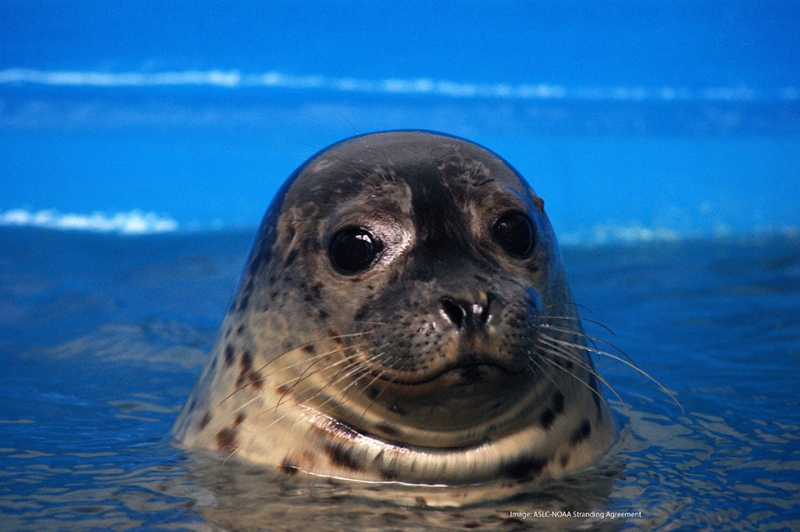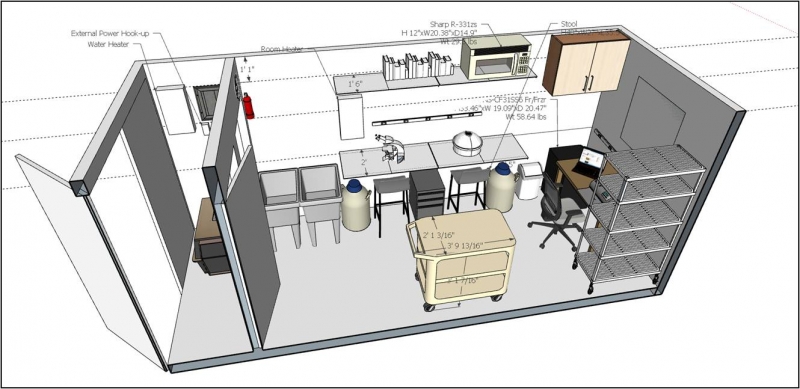This week, NOAA’s Office of Response and Restoration is looking at the impacts of pollutants on wildlife and endangered species. We’ll explore tools we’ve developed to map sensitive species and habitats, how marine debris endangers marine life, how restoring toxic waste sites improves the health of wildlife, and the creation of a mobile wildlife hospital.

I love working with animals but being a bit of an organizational geek, I also enjoy the logistical side of preparation. The right tool for the job, a place for everything, and everything in its place gives me great satisfaction.
Here in Seward, Alaska, we have built a well-equipped facility with depth in space, resources, and personnel. But chances are oil spills will occur somewhere other than our home base. We have partnered with oil spill response organizations to provide support in other key areas with a large industrial and civic presence. These and other fixed facilities have the advantage of being close to population centers, providing shelter, and meeting the needs of stranded animals and our staff.
However, Alaska is a bit on the large side and has thousands of miles of remote coastlines dotted with small communities. As trans-Arctic shipping increases, so does the risk of accidents potentially affecting these shores, and we cannot count on spills happening where our equipment is conveniently available. In fact, we need to be prepared to be completely self-sufficient and independent of even the smallest communities so as not to over-tax their resources with our activities.
So how do we take our rehab center on the road? Or rather, how do we take it down the beach, since most of Alaska’s shore is not accessible by road? We need a deployable set of equipment to treat impacted animals that will also meet the needs of the staff required to care for them.
Something like a MASH unit, a mobile army surgical hospital, or perhaps a ‘Mobile Animal Stranding Hospital!’ The team at Alaska Sea Life Center had already come up with an easily shipped seal pool and a list of equipment needed to support the oiled, stranded animals at fixed facilities as part of our partnerships with oil spill response organizations.
Now we needed to focus on those additional items needed if we were required to provide our own electricity, water, shelter, and staff needs, all of which needed to be compact and deployable.
Ultimately, we settled on a tiny-house-meets-Transformers approach in which we fill specially designed shipping container units with the necessary supplies and equipment, ready to be deployed where needed. Once on site, they transform into a veterinary clinic, food storage and kitchen, animal housing—including a pool, totes, crates, and dry area—and staff area.

But how will we staff our responses? Initially, we plan to draw from our own staff, as many are both Hazardous Waste Operations and Emergency Response certified and experienced with caring for marine mammals and are based right here in Alaska. We have also partnered with the Association of Zoos and Aquariums to train additional personnel experienced with the unique challenges of caring for marine mammals. Their home institutions have agreed to allow trained staff to deploy in support of events, but their staff are also trained to assist with events in their local area.
In combination, these efforts keep us ready, keep Alaska ready, and keep zoos and aquaria across the country ready.
To read more about the Association of Zoos and Aquariums program to train members for wildlife spill response:
Zoos and Aquariums Training for Oil Spill Emergency Response
Read more stories in our series on the effects of pollutants on wildlife:
- How to Locate Wildlife Threatened During Oil Spills
- A Legacy of Industry and Toxins in Northern New Jersey: Striped Bass and Blue Crab
- How Marine Debris is Impacting Marine Animals
Carrie Goertz is the staff veterinarian at the Alaska SeaLife Center overseeing the program of veterinary care for collection, research, and stranded animals. Special interests include helping the center and other zoological facilities being prepared to respond to disasters as well as how information about animals in zoological facilities and free ranging wildlife can help provide the best care for both groups.
Opened in 1998, the Alaska SeaLife Center is a private, non-profit research institution and public aquarium. ASLC generates and shares scientific knowledge to promote understanding and stewardship of Alaska’s marine ecosystems, and is an accredited member of the Association of Zoos and Aquariums. To learn more, visit www.alaskasealife.org.
